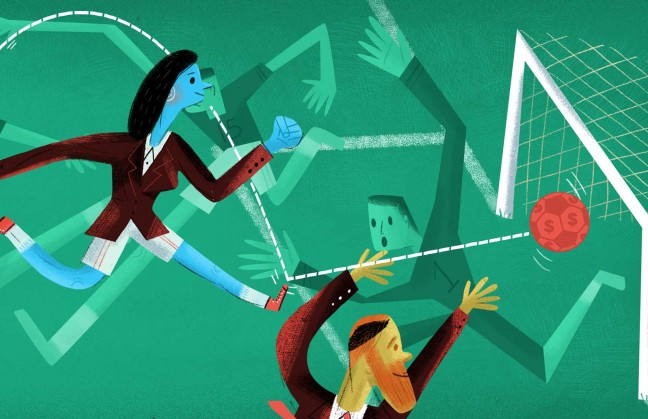Cross-Cultural Differences in Inclusive Leadership Perception and Application
In a globalized world, to understand and manage culturally diverse teams is challenging. This research of Tecnológico de Monterrey is to help inclusive leaders to understand the cultural differences among some countries

Leadership is usually defined as the art of motivating a group of people to act together towards achieving a shared goal. It is a challenging task as it involves balancing the needs and acts of the leader, the organization, and each of the team members. In a globalized world, leaders face an even more difficult task, as more team members come from diverse backgrounds.
Diversity is defined as diversity is the presence of individuals with a range of different, often conflicting, characteristics. Diversity has become a buzzword that is present across all social media, public debate, and academic discourse. For example, in most companies, one can find also generational diversity, linguistic diversity, educational diversity, and political diversity. If managed well, diversity can be a great source of competitive advantage, as individuals coming from different backgrounds bring a plethora of experiences, insights, and ideas, leading to higher levels of creativity and better organizational performance. If managers want to be true and inclusive leaders, they must understand the true nature of diversity in their teams.
We discuss the meaning of inclusive leadership in various cultures. To understand the essence of inclusive leadership, we analyze some challenges posed by diversity and how to tackle them. Based on our research, we provide a few suggestions for inclusive leaders with team members from Mexico, Canada, India, Poland, and Brazil.
Inclusive Leadership in Mexico
The unique Mexican culture reflects the complexity of the history of the country, which is a blend of indigenous and Spanish cultures. The leadership model in Mexican businesses can be described as autocratic and paternalistic. On the one hand, the Mexican leadership style is autocratic because as Mexico presents a high-power distance culture, instructions should be given clearly and precisely, while subordinates are expected to follow those instructions without much questioning. On the other hand, leadership in Mexico tends to be paternalistic because the apparent rigidity of hierarchy and formalism is tempered to some degree by a relatively casual approach to rules and regulations. As a consequence, inclusive leaders should manage with both Paternalism and a sense of “extended family”, which are important factors of Mexican management styles. Finally, inclusive leaders cannot give instructions to subordinates with no concern about politeness and respect to the subordinates.
Inclusive Leadership in Canada
Canada is a highly multiethnic, multicultural, and multilingual society, which poses a great challenge for Canadian inclusive leaders. The desired style in Canada is charismatic and participative leadership; Therefore, leaders involve their followers in the decision-making process. In other words, the immigrant followers may expect the leader to make the decision and thus to take responsibility. This attitude of a cultural mosaic where cultures are preserved as opposed to the approach of a melting pot where all newcomers should blend into the existing norms creates a significant challenge for leaders.
Inclusive Leadership in India
Being a country with a large population and great diversity, India presents endless varieties of cultural, ethnic, and linguistic features and patterns. There are 22 official languages in India and over a million speakers of at least 30 regional languages. Such diversity poses tremendous challenges for inclusive leaders in India. Our research presents several takeaways for inclusive leaders in India. First, they must remember that India is a collectivist country, and the concept of saving face is quite important. Therefore, it is a common practice to think of the common good and not to mention one's mistakes in front of their peers. Second, similar to Mexico, relationships outside the work are quintessential in the Indian context. Indians want to know their managers and peers better and, therefore, inclusive leaders should understand the importance of relationship building. Besides, Indians are ambivalent about time and punctuality. This can be attributed to the fact that the word for tomorrow and yesterday is the same in many Indian languages (Kal); therefore, inclusive leaders must be sensitive to the ambiguity surrounding the notion of punctuality.
Inclusive Leadership in Poland
Culturally speaking, Poland has always been rather monolithic, with a majority of the population speaking the same language and sharing the same values and religious beliefs. That suggests a landscape that is highly intolerant, and careful. In Poland, there are three recent yet big challenges for inclusive leadership. First, there is Poland's aging society. In our research, we found that currently, in the workplace, there is a clear divide between the "old guard and the" young wolves. " Second, sexual diversity in the workplace has not been a part of the debate for a long time because Poland comes across as a rather conservative and intolerant society. Lastly, a recent and rapid increase of foreign labor, especially in the service and construction sectors, from Ukraine, Belarus, India, Nepal, and Turkey is causing challenges. Altogether, the Polish workforce is far from being homogeneous, therefore, speed of action and ability to deal with ambiguity, improvisation, and resistance to change were always amongst the competencies Our work suggests that Polish inclusive leaders should have the following traits: visionary, diplomatic , and administratively capable, with tendencies to an autocratic leadership style.
Inclusive Leadership in Brazil
Ethnic diversity is the main form of diversity in Brazil, and it is caused by the confluence of different populations that form the Brazilian society, which is based on Native Brazilians, descendants of the Portuguese colonists, African descendants, and European, Arab, and Japanese immigrants. Finally, a highly informal, ambiguous, and indirect communication style characterizes the Brazilian business environment. Brazilians are not normally explicit in their arguments; instead, they might use informal gatherings and usually opt for the indirect message. To deal with the informal organization and have an influence on it, including leaders that deal with Brazilian team members need first to take their time and dig into the deeper levels of the Brazilian cultural iceberg.



